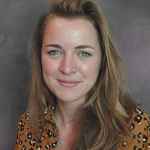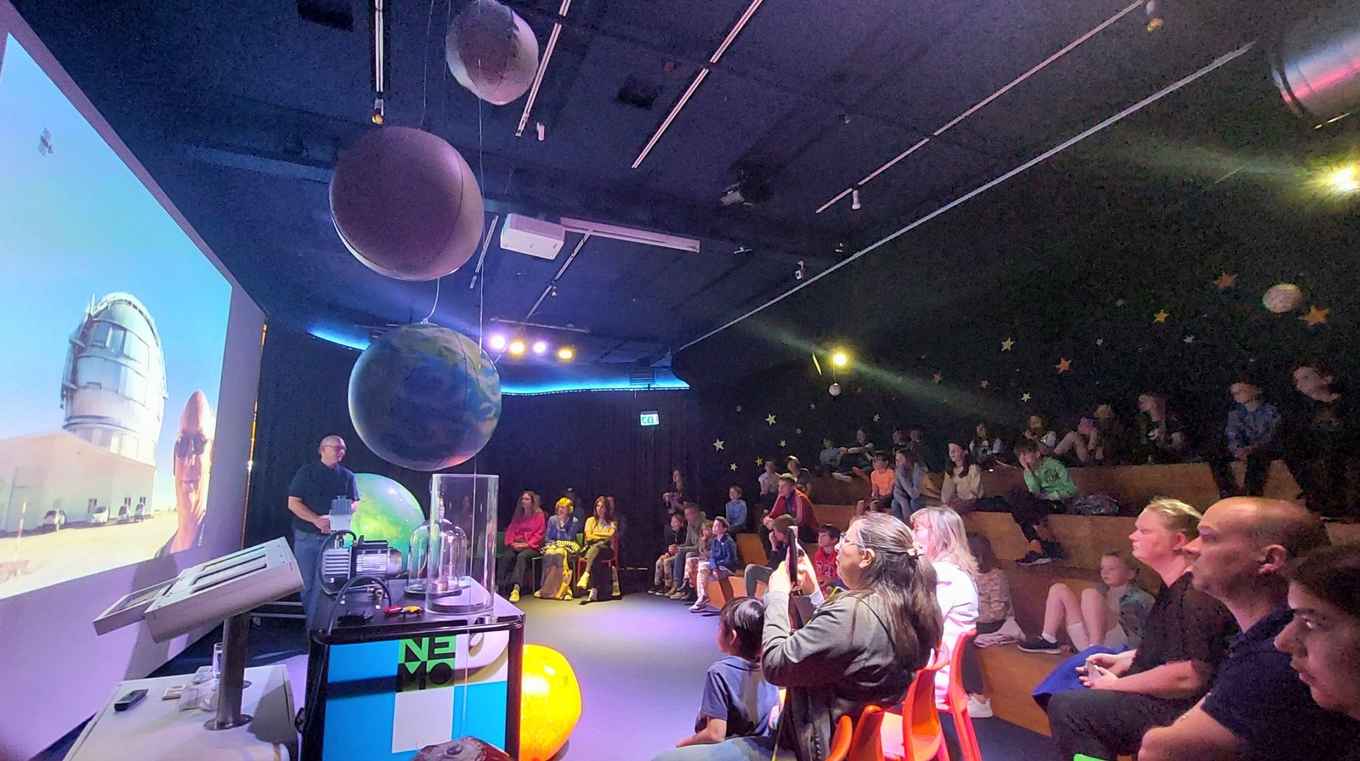'I came to the conclusion that I simply knew too little about it'
30 May 2023
On behalf of the FNWI, the Outreach team (part of the communication department) is taking care of the organisation. Project leader Charlotte Clarijs, together with two Nemo staff members, discusses with scientists about giving a lecture and the possible subjects, does the preliminary interviews and is present on the day itself to keep the event on track. Recently, she supervised the children's lecture by Rudy Wijnands, professor of observational high-energy astrophysics, on satellites. What are satellites, and what would happen if they were not there? A report of the lecture by Charlotte:
'To be honest, I didn't really think satellites were the most interesting objects in the universe, but I came to the conclusion after this lecture that I just knew too little about them. For example, I had already been wrong about the definition of satellites: it turns out that we just live on a big satellite ourselves.'
'The object you usually picture by "satellite" is called an artificial moon, a man-made unmanned satellite. Getting artificial moons into space by rocket requires a lot of fuel. For an efficient launch, you therefore want as much equipment on as little surface area as possible. This requires clever and creative design. The solution comes from an unexpected quarter: origami... So learning to fold cranes and hoppers is more useful than I ever thought.
Furthermore, I learnt that the space is already quite full of satellite waste. And that this needs to be cleaned up. But how? Scientists want to use some kind of large fishing net for this. Maybe in about 20 years, the children present will provide a much better solution, at least they gained the first bit of knowledge and awareness today!'

Children often have completely different perspectives compared to the scientist or students. I often hear scientists themselves getting energy and new ideas after giving a lecture in the museum.Project leader Charlotte Clarijs
The Outreach team is currently working on the lecture series for 2024. Dutch-speaking scientists who might be interested in lecturing can read more about the children's lectures and contact Charlotte Clarijs. General information for scientists on science communication and outreach can be found in the AZ item.
